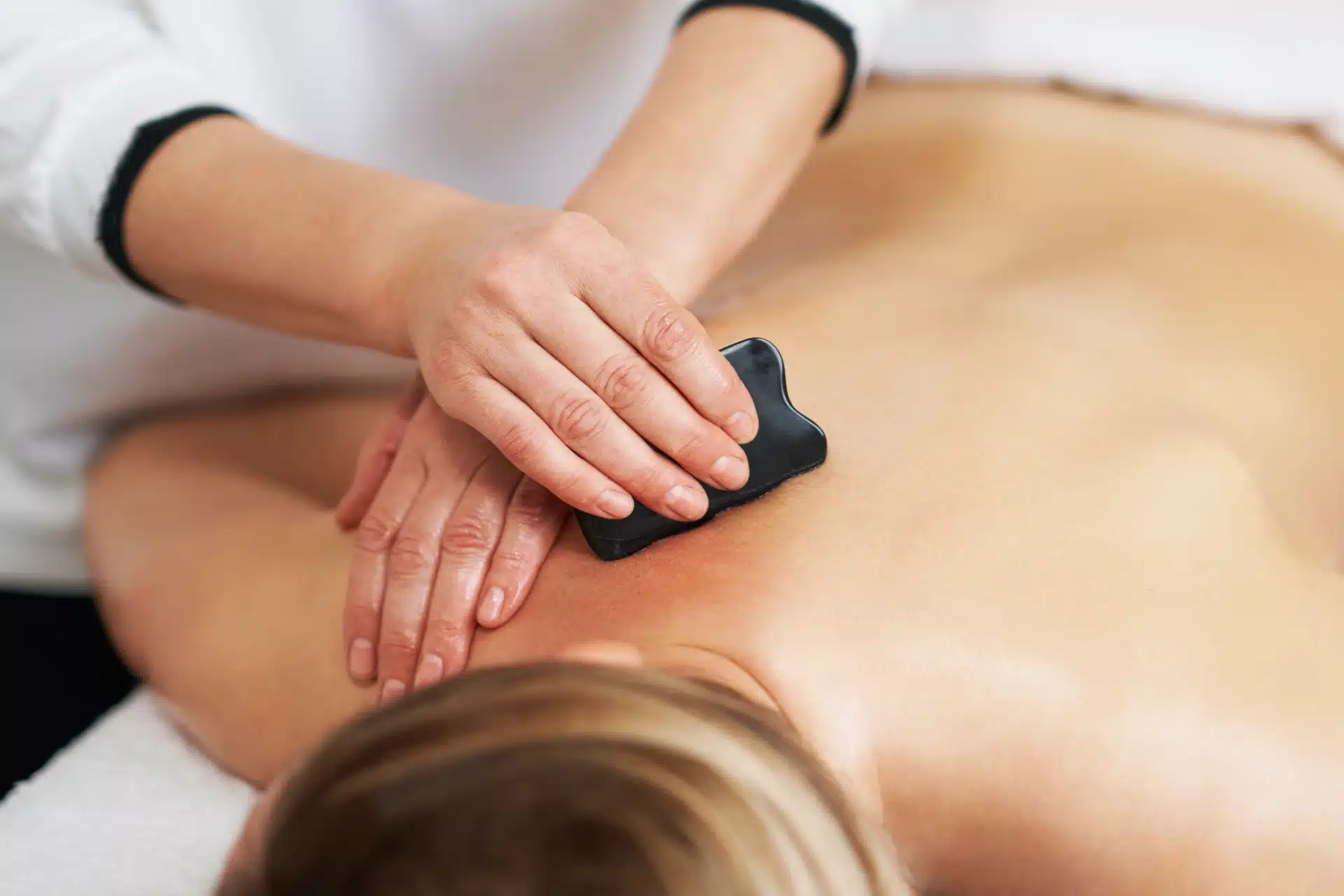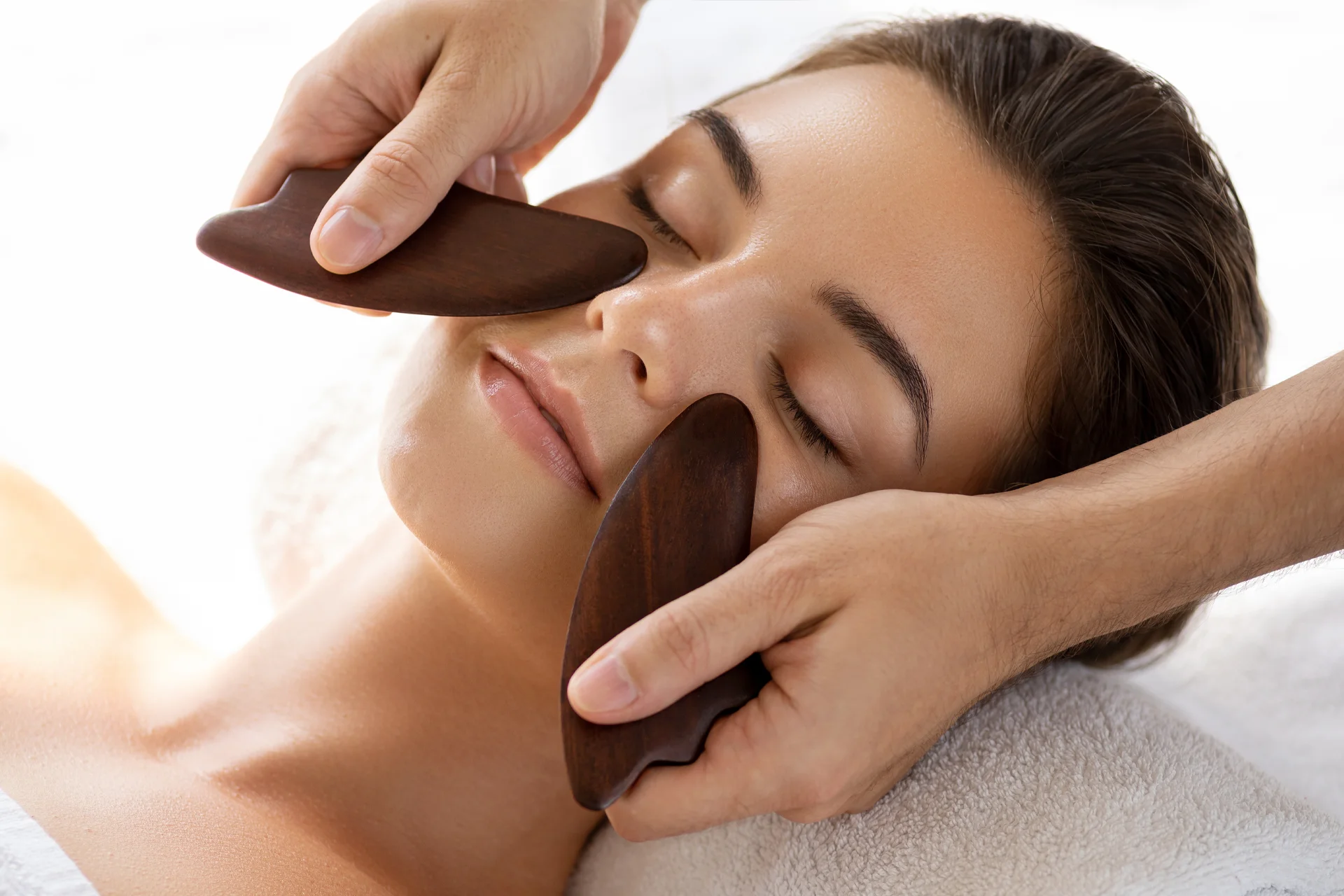
In Mandarin, Guasha simply means “scraping sand”. This treatment involves repeatedly applying strokes to the skin’s surface with a smooth-edged flat instrument, which is typically made of materials like ceramic, horn, or jade. In order to reduce discomfort, these strokes are usually unidirectional and applied to lubricated skin. The objective is to cause petechiae, or localised redness, also referred to as “sha,” which denotes the body’s release of toxins and stagnant energy.
According to TCM, Guasha facilitates the body’s natural healing processes by clearing blockages in meridians, boosting blood circulation, and stimulating Qi (vital energy). Traditionally used on the shoulders, neck, and back, Guasha has also been modified for facial treatments, providing skin and body benefits.
Guasha's influence on sub-health, a condition in which people lack a diagnosable illness but nevertheless suffer from persistent symptoms like exhaustion, restless nights, depression, or diminished focus, is among its most underappreciated but significant advantages.
Guasha supports systemic balance and nervous system regulation, frequently alleviating symptoms associated with:
Guasha is generally safe, but before receiving treatment, some individuals should have an in-depth consultation prior to treatment:
Following treatment, dark, purple, or red streaks or patches may appear on the skin. These are petechiae, or “sha,” not bruises. These indicate the emergence of underlying stagnation. The intensity and colouration can reveal information about the state of the body:
As the body’s circulation improves with repeated treatments, these marks typically disappear in 3 to 7 days.


After every session, adhere to these care guidelines to preserve the advantages and prevent negative effects:
At Liang Yi TCM, we provide Guasha as part of our wellness therapy, and TCM treatments. If you would like to know more, feel free to contact us and we will be in touch soon.